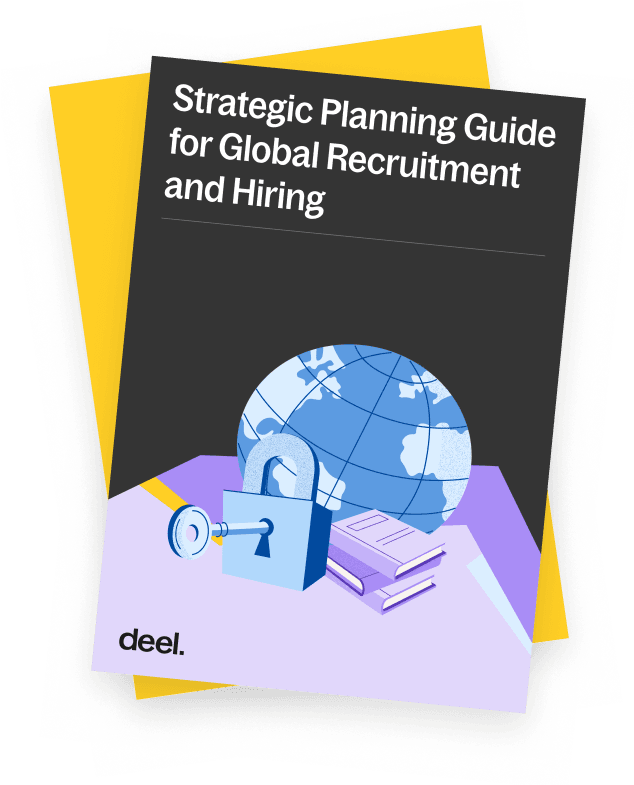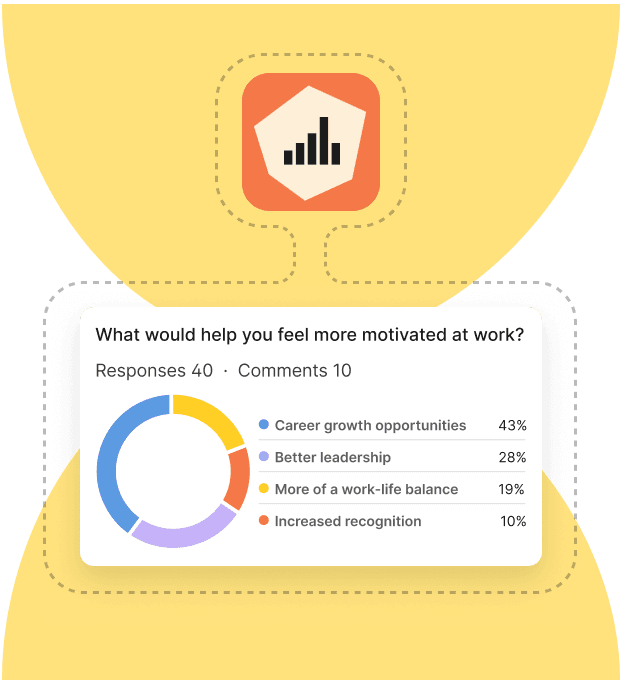Article
17 min read
Top 7 Repeatable Strategies for Recruiting Top Talent
Global HR

Author
Ellie Merryweather
Last Update
September 02, 2025

Table of Contents
1. Get clear on who you need and why
2. Craft compelling and differentiated job descriptions
3. Source proactively and globally
4. Build a frictionless candidate experience
5. Close with confidence and speed
6. Keep an updated talent pool
7. Offer a positive onboarding experience
Why traditional hiring methods might not secure top talent
How Deel helps you recruit top talent globally
Key takeaways
- Studies show that top talent are job hunting selectively rather than desperately, with 71% applying to only one or two roles.
- A well-optimized hiring process contributes to a strong employer brand, helping you attract more high-quality candidates in a competitive landscape and spend less time on initial outreach.
- Don’t neglect onboarding in your recruitment strategy. A positive onboarding experience increases employee retention, with 70% of employees staying at the company for three years or longer.
To recruit top talent for your organization, you need to stand out as an employer of choice. From the first outreach email to a new hire’s onboarding experience, every interaction shapes how candidates perceive your organization.
55% of hiring leaders worldwide proactively build a positive employer brand, offering a candidate experience that reflects well on their organization. If you’re looking to do the same, you need to scale your processes without overwhelming your HR and TA team. That means streamlining decision-making, aligning hiring stakeholders, and implementing tools that save time and increase consistency. But here’s the catch: you cannot sacrifice the candidate experience in the name of efficiency.
This guide will offer seven repeatable strategies for recruiting top talent regardless of where your company operates from and where you’re hiring.
1. Get clear on who you need and why
You could hire the best Product Manager in town, but if in reality you needed a Project Manager all along, you’d have wasted time and resources. It’s also unlikely that the new hire will stick around for very long, contributing to high employee turnover.
This is why the first step in any recruitment strategy is workforce planning. Connect hiring needs with business goals, and understand which skills gaps need to be filled.
Keep things clear by differentiating between two types of workforce planning:
- Operational workforce planning: A short-term analysis of roles and functions needed in the short term.
- Strategic workforce planning: A long-term analysis of staffing needs with future growth in mind.
Once you’ve figured out who you need, both now and in the future, consider the how. For core roles that are vital to your business, you’ll likely want to hire full-time employees with a focus on retention. For short-term roles, you may benefit from the flexibility of hiring contractors. And if you’re serious about hiring the best talent regardless of where they’re located, you’d benefit from hiring through an Employer of Record (EOR).
Tip: To keep this scalable, workforce planning tools are essential. Not only do they ensure alignment between leadership, HR, and finance, but they also streamline processes for smooth collaboration.
Complementary reading
Discover the core components of workforce planning, from defining business goals to planning your employee engagement strategy.
Deel Workforce Planning
2. Craft compelling and differentiated job descriptions
Even if your organization is a household name, your job descriptions may be the first impression a potential candidate has of who you are as an employer. To catch the attention of top talent, a list of requirements and buzzwords like ‘competitive salary’ isn’t enough.
Start by describing the role and its impact within the organization. What’s the mission of your organization, and how will this position contribute to it? Studies show that the majority of job seekers prioritize a company’s purpose when choosing roles to apply for.
Follow up with what you can offer them in terms of career growth, company culture, and working environment. Use inclusive language, avoiding gender-specific terminology and cliches like “work hard, play hard.”
Free resources
Catch the attention of top talent with our job description templates. With 50+ roles covered, you’ll find templates for everything from C-Suite (CTO, COO) to operations (Project Manager, Research Assistant), and creative roles (Copywriter, Art Director).
3. Source proactively and globally
With the world’s global talent within your reach, why leave anything to chance? That’s what you’re doing if you’re just publishing jobs on LinkedIn and hoping that the right people find you. An effective hiring strategy is a proactive hiring strategy.
Start with the basics, like an employee referral program. Having existing team members connect the dots between your organization and great candidates boosts the quality of your talent pool, and statistically leads to higher employee retention. You’re more likely to find candidates with cultural fit when they come recommended by someone on the team.
If you’re growing at scale, it might be worthwhile to build and nurture a talent community. By curating a pool of people who are actively interested in working with you, you can pre-screen candidates before a vacancy is officially open.
When reaching out to potential candidates, whether from a talent community or through social sourcing, borrow some tactics from your sales team. For example, using value-first outreach increases your chances of engaging top candidates. For recruitment, this means personalizing your message and building genuine rapport. Try:
- Initiating a conversation, rather than immediately sending links to your vacancies. “Since we’re both in the same industry, I’d love to know more about your thoughts on X / hear more about your experience in Y.”
- Personalize your message by acknowledging their experience and skills. “I see you moved from Front-end Developer to UX Designer at [Company]. That must have been an interesting transition.”
- In the lead up to talking about your vacancy, ask thoughtful questions. “Is there anything you might be particularly looking for in your next role?”
- If appropriate, offer a free resource. “If you’re interested in moving more into Product Management, here’s an online community that might be useful to you.”
Tip: If you need to hire for the first time in international markets, you might feel overwhelmed, especially when you're unfamiliar with local job boards, cultural expectations, or legal requirements. With Deel Talent, you can tap into our global hiring partner network, saving you valuable time and ensuring compliance with local labor laws.
Customer success stories
With operations running around the clock, Keyrock needed a globally distributed workforce to cover diverse time zones. With Deel's Employer of Record (EOR), they achieved ambitious global expansion goals without having to set up countless legal entities.
Deel has not only streamlined our hiring process but also empowered us to access talent we couldn’t have reached otherwise. It’s a true game-changer for a global company like ours.
—Rebecca Neal,
HR Operations Specialist at Keyrock
4. Build a frictionless candidate experience
You’ve caught the attention of a great candidate, and made a strong enough impression that they’ve submitted their application. The next step is to provide them with the best possible hiring process. When talented professionals are actively job hunting, they’re likely juggling more than one process at the same time. To keep up their momentum, your hiring process needs to be:
- Fast: Speed is everything, especially when top talent is on the line! While you don’t want to rush hiring decisions, long delays may lead to a great candidate dropping out in favor of a more proactive process or another offer.
- Clearly communicated: 47% of candidates who drop out of interview processes do so because of poor communication. People can tell when they’re being ‘kept warm’ rather than being prioritized. Keep the communication regular and personal, even if you’re relying on automation.
- Structured: Maximize the effectiveness of interviews by planning them out in advance. Not just who the candidate is going to meet, but what the goal is of that meeting.
- Respectful: 36% of candidates who drop out of interview processes do so because they felt they had to jump through too many hoops. Ensure the effort candidates need to invest matches the seniority and responsibility of the role they’re applying for. For example, don’t ask for seven interview rounds and a case study presentation for an entry-level role.
- Reciprocal: This is as much an opportunity for the candidate to assess you as it is for you to assess them. Collect feedback from your candidates to better understand where you can improve.
Tip: Speed is one of the biggest pain points both for candidates and hiring managers. To ensure a swift interview process, use an ATS (applicant tracking system) to streamline recruitment. Build a robust system that offers faster turnaround times for the candidate and a more efficient hiring process for you.
5. Close with confidence and speed
As with sales, talent acquisition is all about the close. When you’re ready to make an offer to an exceptional candidate, move quickly and decisively. Especially if they’ve informed you that they’re in the final stages of another hiring process, or waiting on another offer.
While pay obviously has a major influence on their final decision, it’s not always the highest bidder that wins. Now is the time to be transparent about your key differentiators:
- What growth can you offer, and how is it structured?
- Do you offer remote work, relocation, or flexible hours?
- Is there anything else that current employees consistently point to as a key factor in their job satisfaction?
Tip: When discussing compensation and benefits, make sure you’re clear on what the standards are in the countries you’re hiring in. 15 days of PTO might sound good in the US but candidates in France, where the legal minimum is 25, won’t feel motivated to apply.

Free template
The easiest way to explain total compensation
Depending on which growth stage your organization is in, you may be able to sway a great candidate away from a more established competing offer, even if you aren’t currently able to offer the highest base salary. If you’re a startup, you might consider equity as part of your offer package. Offering the right blend of benefits, base salary, and growth opportunities—paired with a meaningful mission and a value-first pitch—can still attract job seekers.
Deel Equity
6. Keep an updated talent pool
For efficient outreach you should prioritise reaching out to previous candidates and – in some cases – former employees:
- Candidates who rejected offers. Sometimes it’s a case of ‘right company, wrong time’ or ‘right person, wrong role.’ Keep tabs on those you’ve already flagged as high quality professionals to save time when doing outreach for vacancies.
- Candidates who came close to an offer: Every hiring manager has, at one point, had to choose between two brilliant candidates. Keep those who came second in the loop with any new opportunities they’d be a good match for.
- Former employees who left the door open: If a great employee left on good terms, it’s worth re-engaging with them to see if they’d be open to returning for the right role.
- Contractors with great potential: You may have a new role that a contractor would be perfect for, or a contractor who adds so much value that they’re worth bringing onboard as a full-time employee.
Deel Talent
These candidates have been pre-screened for quality, and are already familiar with your organization’s mission, culture, and work environment. In the case of former employees, they have an especially deep understanding, and would come with valuable knowledge to help them onboard more quickly.
Before you reach out, it’s important to know why things didn’t work out the first time. What was it that stopped a candidate from becoming an employee, or what caused a former employee’s departure? Make sure whatever these factors are have changed to avoid alienating candidates and wasting time. For example, if a candidate refused a previous offer because the salary was too low, make sure you’re not offering them the same compensation package as last time.
Tip: When reaching out to former employees with new opportunities, go through any feedback they gave in their exit interview. For example, if they left to pursue better growth opportunities, make sure a structured growth path is part of the new offer.
7. Offer a positive onboarding experience
Recruitment doesn’t end once a candidate has signed the contract. A positive onboarding experience sets the tone for how a person’s worklife will be, as it’s their first real taste of what it’s like to be part of the team. Studies show that good onboarding leads to 70% of employees staying at the company for three years or more.
Make sure your new employees know what to expect from their first day. Their direct manager should reach out to them with a welcome message, along with an invitation to their first meeting. If they’re working remotely, any equipment should have ideally arrived a few days before their start date, along with clear instructions of how to log into any new email or employee accounts.
Putting in this extra effort to make people feel welcome before Day 1 instills a sense of confidence and trust, reducing the risk of turnover.
Tip: Take the opportunity to survey your new employees after their first week and first month, specifically about their onboarding experience. Ask them to point out any highlights or speedbumps, to understand where you need to improve.
Complementary reading
Ready to boost your onboarding experience? Here are the 6 best onboarding practices to help your new employees hit the ground running.
Surveys
Why traditional hiring methods might not secure top talent
Studies suggest that top talent are job hunting decisively rather than desperately, with 71% of people applying to only one or two jobs. And with the rise in remote-first companies making the recruitment field more competitive than ever before, you can’t rely on traditional hiring methods.
Whether you’re hiring globally or aiming to scale with the best people in a single market, it’s not enough to publish a job posting on LinkedIn and hope for the best. At least not if you’re trying to attract the highest quality candidates. You need a proactive recruitment strategy that meets modern candidate expectations.
Here's what top professionals are looking for:
- Speed: Above all, candidates want to hear back from you quickly, without having to spend weeks in limbo between interview rounds.
- Communication: They expect communication to be informative, timely, and structured.
- Respect: They want to feel that their time is valued, and the effort expected on their end is reasonable for the role they’re applying for.
- Attractive and competitive benefits for their market: This includes compensation, PTO, stock options, and other location-specific benefits. For example, many companies in Japan offer comprehensive wellbeing packages that go beyond what’s legally required.
- Healthy work environments: Candidates value work-life balance, flexibility, and non-toxic leadership.
- Motivation: They want to be inspired by your mission, attracted by your employer brand, and excited about joining.
Outdated hiring practices leave top candidates frustrated—or worse, ignored. When your recruitment team is drowning in applications, and leadership, HR, and finance aren’t in sync, delays and missteps are inevitable. And in a market this competitive, even small slip-ups cost you the best people.
Customer success stories
When MELD needed niche skills at scale, their lean HR department used Deel to handle administrative tasks efficiently while staying up-to-date with labor regulations. Now they have a high-functioning globally distributed team, without worrying about non-compliance.
It doesn’t matter where in the world our talent is based. Deel has removed all the pain points around contracts, onboarding, and paying our team. We’re now more efficient, and we can focus on building our app as opposed to dealing with hundreds of employment matters.
—Lavinia Radu,
Head of HR, MELD

How Deel helps you recruit top talent globally
Overcome the biggest challenges in recruiting top talent, by letting Deel do the heavy lifting. With Deel, you get a complete overhaul of your HR workflows from outreach to onboarding and beyond.
- Connect with top staffing partners to tap into multiple markets without building a talent pool from scratch.
- Hire top talent flexibly in more than 150 countries with Deel EOR and Deel Contractor
- Avoid worker misclassification and ensure compliance. Deel ensures the right payroll taxes, social contributions, and other government fees are paid
- Create positive onboarding experiences and accelerate time-to-productivity with engaging onboarding and training programs
- Gain back precious time by managing your global workforce in a single HRIS platform bringing together contractors, EOR, and direct employees.
Are you ready to win the competition for top global talent? Book a free demo.
Live Demo
Get a live walkthrough of the Deel platform

FAQs
What makes someone top talent?
Professionals with a blend of hard skills, soft skills, and experience. They may have years of experience in your industry, or they may have held a variety of positions making them dynamic and adaptable. They have a track record of getting results, and they come highly recommended by their previous or current teammates.
Why is hiring top talent important?
Top performers provide better ROI by driving results and often going above and beyond the role they were initially hired for. They also become autonomous more quickly and are best poised to grow within the company.
How long is top talent on the market?
Not long! Research shows that top candidates can be job hunting for as little as 10 days, thanks to their sought-after skills and strong professional networks.
Can I legally hire someone from another country?
Yes. Deel makes it easy to hire professionals compliantly in over 150 countries without setting up an entity. Choose Deel EOR for hiring multiple full-time employees or Deel Contractor when hiring for short-term staffing.

Ellie Merryweather is a content marketing manager with a decade of experience in tech, leadership, startups, and the creative industries. A long-time remote worker, she's passionate about WFH productivity hacks and fostering company culture across globally distributed teams. She also writes and speaks on the ethical implementation of AI, advocating for transparency, fairness, and human oversight in emerging technologies to ensure innovation benefits both businesses and society.


















